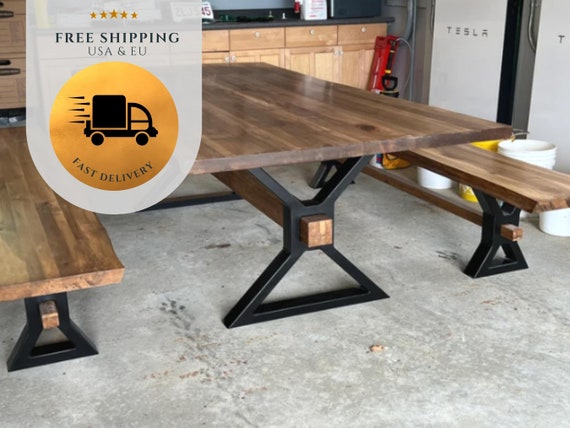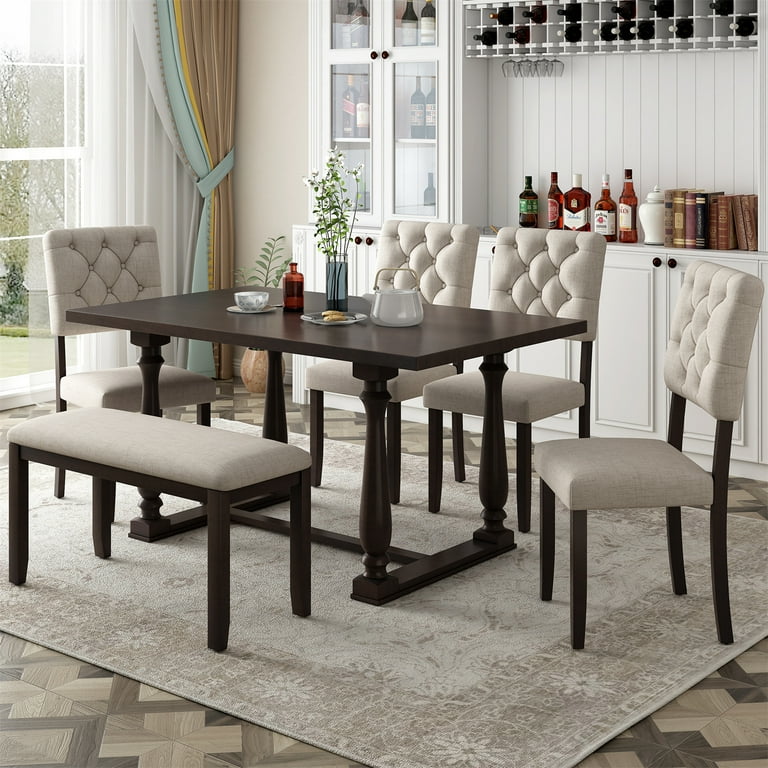How to Maintain and Care for Your Dining Room Table Legs
Specialist Tips for Installing Dining Space Table Legs for Maximum Stability
When it concerns installing dining-room table legs, achieving optimum security is extremely important for both capability and appearances. The process starts with selecting the ideal materials and equipment, adhered to by careful alignment and consideration of weight circulation. Each action plays a crucial function in ensuring that the ended up item withstands daily usage without endangering safety or style stability. Understanding the subtleties of these aspects can considerably affect the total result. What particular methods can enhance security also better?
Choose the Right Legs
When picking the suitable legs for your dining area table, it is vital to think about both performance and aesthetics. The legs you pick will substantially affect the total design and security of the table. Evaluate the table's meant use; if you expect regular gatherings, stronger legs, such as those made from solid wood or metal, may be extra appropriate, as they supply raised longevity and support.
Standard eating tables commonly vary from 28 to 30 inches in height, so ensure the legs line up with this requirement for comfort. Conical legs can include a contemporary touch, while turned legs could communicate a more traditional aesthetic.

Select Appropriate Equipment
How can the best equipment enhance the stability and long life of your dining-room table? The choice of ideal hardware is important to ensuring that the legs of your table are safely connected and able to hold up against regular usage. Premium screws, screws, and braces provide the needed toughness to support the weight of the table, as well as any type of added lots positioned upon it during meals or gatherings.
When selecting screws, select those made from long lasting materials such as stainless-steel or brass, which stand up to rust and maintain integrity over time. The length of the screws is similarly crucial; they must pass through deeply right into the table's framework without endangering honesty. For bolted links, take into consideration making use of lock washing machines to protect against loosening up as a result of resonance or motion.
Furthermore, utilizing corner brackets can add added assistance, particularly for larger tables or those with heavier tops. These braces distribute weight evenly and aid preserve the table's shape. Ensuring that the equipment you pick is suitable for the particular products of your table will certainly even more boost its general stability and long life, enabling you to enjoy your eating experience for years ahead.
Ensure Appropriate Alignment
Proper positioning of eating area table legs is necessary for both aesthetic allure and functional stability. To attain optimal positioning, start by measuring the distance from the table's corners to the leg add-on factors.
Use a degree throughout installation to verify that each leg is vertical to the table top. This action is essential, as also small inconsistencies can rise into considerable security concerns over time. It is recommended to note the wanted leg placements on the underside of the table with a pencil or concealing tape before protecting them. This technique works as dig this an aesthetic overview, permitting changes as needed.
Furthermore, double-check the positioning after the preliminary screws are tightened, as modifications may be required before totally securing the hardware. By focusing on proper alignment, you not just boost the table's total layout however likewise make sure that it stays steady and practical for several years ahead.

Consider Weight Distribution
After making certain correct positioning my explanation of the dining room table legs, it is very important to consider weight circulation to improve security and performance. dining room table legs. Proper weight circulation is important in preventing ensuring and tottering that the table can support its designated load without danger of tipping or breaking down
When placing the legs, ensure they are positioned at equal ranges from the center of the table to uniformly distribute the weight throughout the framework. Take into consideration the weight of the tabletop and any type of items that will regularly rest on it, such as attractive pieces or tabletop home appliances. Tables with heavier surface look these up areas should ideally have legs located closer to the edges, as this maximizes the base of support and decreases the threat of instability.
Additionally, if the table is meant for usage in a high-traffic area, think about making use of larger materials for the legs or adding maintaining components, such as cross-bracing or a lower shelf - dining room table legs. These changes can aid maintain balance and stop changing throughout use. Eventually, a well-considered weight circulation strategy will substantially boost the table's total efficiency, guaranteeing it remains a practical and appealing focal point for your eating room
Test Stability Before Use
Evaluating the stability of the eating area table before use is an important step that should not be forgotten. If the table reveals instability, determine the legs or joints that may call for modification.
Next, check that all fasteners and screws are tightened effectively. Loosened connections can bring about instability and possible damage with time. If needed, utilize wood adhesive on joints to enhance security, making sure to allow adequate drying out time.

Verdict
To conclude, the setup of eating room table legs needs careful consideration of products, weight, positioning, and equipment circulation to achieve maximum security. By picking top quality fasteners and strong legs, ensuring precise positioning, and distributing weight uniformly, the architectural honesty of the table can be significantly enhanced. Carrying out a stability test prior to routine usage additionally makes certain that the table will certainly withstand everyday pressures, thereby offering a safe and dependable dining experience.
When it comes to installing eating space table legs, achieving maximum security is critical for both performance and looks. The legs you select will substantially affect the general style and stability of the table (dining room table legs). Basic dining tables usually range from 28 to 30 inches in height, so ensure the legs align with this criterion for convenience.Appropriate alignment of dining area table legs is crucial for both visual charm and functional security.In final thought, the installation of eating space table legs needs careful factor to consider of materials, hardware, placement, and weight circulation to accomplish maximum security